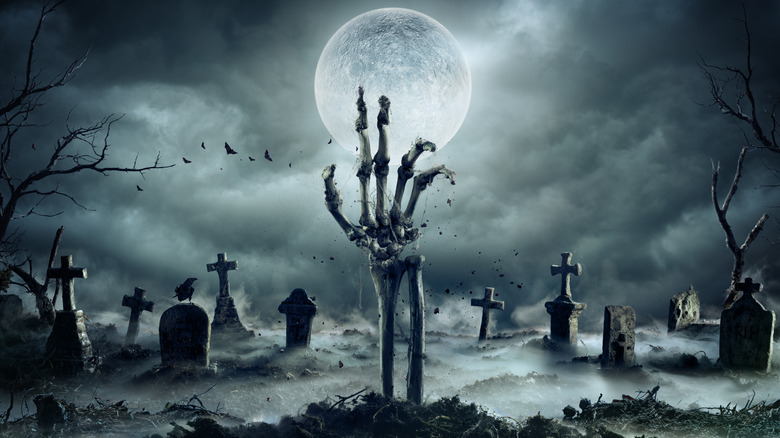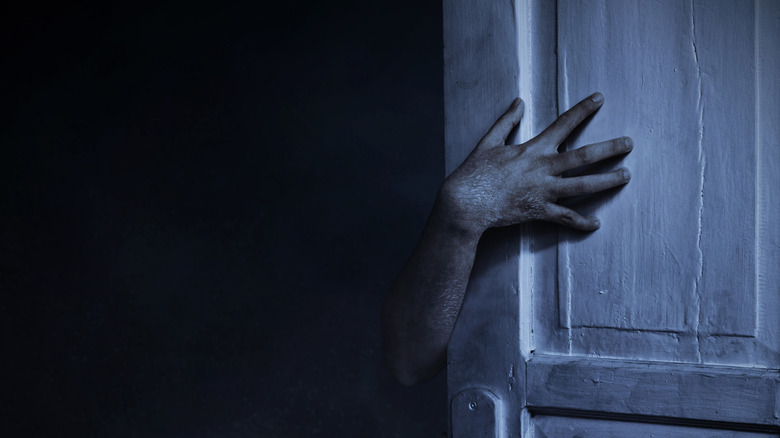Why Fear Of Zombies Was Prevalent In Medieval Times
Our preconceived notions about the Medieval period's poor standards of personal hygiene are unfair. As The Vintage News reports, the people of this famously foul-smelling era weren't (always quite) as unclean as you might expect. Baths were more often enjoyed by the more well-to-do of society, granted, but some nobility reportedly owned luxurious wooden tubs and even scented the water with flowers or other natural pleasantries. Others couldn't afford that and would tend to bathe when the weather was warm enough for a dip, but it seems they would freshen up with cold water quite frequently.
With that and the public bathhouses that were quite widespread in the era, some people in the Middle Ages may have been just as clean as the average regular-shower-taker today. Here's something else they had in common with many of us: they were terrified by zombies.
According to anthropologist and author Sarah Woodbury, it's claimed that one-third of children didn't live to the age of 5, and from data gathered from adult members of the Welsh royal family, the mean life expectancy for men was 48.7 years and the mean for women was 43.6 years. High mortality meant a lot of dead people, who were thought to be dangerous to the living.
The Medieval fear of the revenant
The December 2017 volume of "Journal Of Archaeological Science: Reports" (via Science Direct) features the intriguing paper: "A multidisciplinary study of a burnt and mutilated assemblage of human remains from a deserted Mediaeval village in England." This snappily-titled study surrounds the site of Wharram Percy, where the remains were discovered and dated to around the eleventh to thirteenth centuries. The bones were reportedly those of at least 10 people, six of whom were adults. Dental analysis suggests that they were people from the area, and some of the bones had been burnt, while others showed signs of having been cut by a blade.
According to the Guardian, skeletal biologist Simon Mays reported that the most likely theory is that these bones are "the remains of corpses burnt and dismembered to stop them walking from their graves." If so, Mays went on, it's the first evidence of this Medieval practice ever found.
Whatever the case was, people of the Middle Ages had a firm belief in revenants: zombies returning to pass disease or otherwise harm the living. As Dr. Darren Oldridge wrote in "BBC History Magazine," it was all too plausible that bodies could rise after death in a Medieval Europe dominated by Christian beliefs (via History Extra). The dead were thought to return (sometimes body and all) to warn sinful people to change, and the idea of the dead remaining to complete something unfinished still lingers today.

